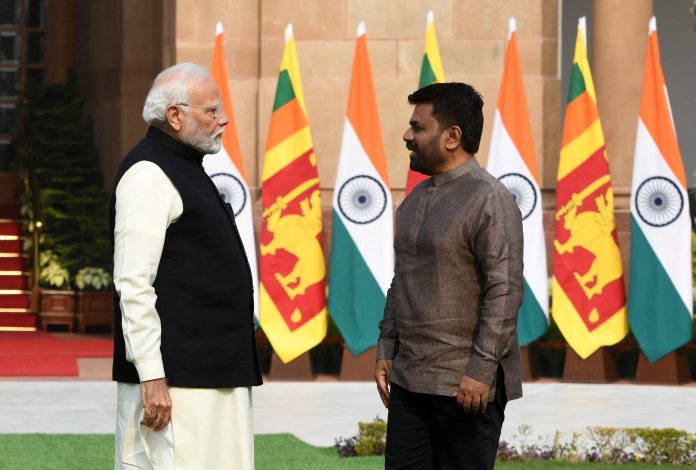By Vishvanath
India and Sri Lanka share an umbilical relationship rooted in deep civilizational, cultural, and religious linkages. However, this proximity has not always translated into mutual trust for both known and unknown reasons.
Historical ties between Sri Lanka and India exemplify a love-hate relationship between a small nation and a giant neighbour. The changing attitudes in Sri Lanka towards India are examined in this essay from historical, political, and socio-cultural standpoints. They are basically influenced by, inter alia,an atavistic fear of India—a historically conditioned sentiment rooted in centuries of invasions and interference. Political events, including India’s interference in Sri Lanka’s ethnic conflict have rekindled these fears and suspicions from time to time.
India’s interference in Sri Lanka’s domestic affairs dates back to ancient invasions. The creation, training, arming and funding the Tamil militant groups, the violation of Sri Lanka’s airspace in defence of the LTTE, the deployment of the Indian Peace Keeping Force, and the signing of the Indo-Lanka Accord and the introduction of the 13th Amendment paving the way for devolution through Provincial Councils have stirred the majority community’s distrust in India. Although the Sri Lankan Tamils were antagonistic towards India during the IPKF period, they have welcomed devolution in principle and maintained political and ethical connections with Tamil Nadu, a dependence that has complicated Sri Lanka’s internal politics further.
Similarly, Sri Lankan Muslims have looked overseas, seeking patronage from Islamic states such as Pakistan, Saudi Arabia, and Iran. The trend of seeking external patronage follows India’s regional rivals increasing in strength, contributing to the geopolitical complexity. Suspicions of Indian intelligence operations have remained during the post-war period as well, with Anura Kumara Dissanayake’s public declaration during his Opposition days that Jaffna was a den of RAW operatives engaged in destabilization operations.
During India’s own freedom struggle, Mahatma Gandhi hoped for the emergence of an indigenous business class—a vision which, after Independence, helped India become a regional economic powerhouse. Much of this dominance was at the expense of the markets and resources of small neighbours, such as Sri Lanka. The Indo-Sri Lanka Free Trade Agreement of 2000 was intended to promote bilateral trade. According to research, benefits have been asymmetrical, and Sri Lanka has failed to achieve expected benefits.
Contemporary Indian action in Sri Lanka is driven by economic as much as strategic interests—access to natural resources, regional hegemony, and containment of rival powers. Despite diplomatic progress through the ‘Neighbourhood First’ policy, and general financial assistance India provided at the height of Sri Lanka’s economic crisis, suspicions remains in Sri Lankan society, in respect of India’s real intentions. Past intervention and present intelligence operations including alleged regime changes, as former President Mahinda Rajapaksa has alleged, have created the prevailing discourse of Indianhegemony. Violations of Sri Lanka’s sovereign rights owing toIndian fishing intrusions and disputes over the Kachchativu islet continue to generate tensions and mistrust.
Lurking beneath it all is the more severe issue—Sri Lanka’s fear of losing the cobalt-rich Afanasy Nikitin Seamount, which forms a part of its expanded continental shelf to India. It serves to heighten the deeper tensions in which national sovereignty comes into play with India’s economic and geo-political agendas. The proposed projects such as grid connectivity, a land bridge and renewable power plants in strategic locations in Sri Lanka, such as Sampur, have not elicited a positive response from the Sri Lankan public although they have received Colombo’s nod.
Based on historical interpretation, current policy analysis, and popular attitudes, this study argues that Indian behaviour continues to perpetuate a narrative of subjugation in the Sri Lankan psyche. Until India recalibrates its approach andprioritises equal partnership over alleged hegemony—perhaps through a rethink of its Sri Lanka policy on the lines of the Gujral Doctrine, Vajpayee’s maxim, “You can change your friends, not your neighbours,” and Modi’s ‘Neighbourhood First’ strategy—the mistrust is unlikely to fade. In fact, it may only deepen.



 Logging you in...
Logging you in... Loading IntenseDebate Comments...
Loading IntenseDebate Comments...

